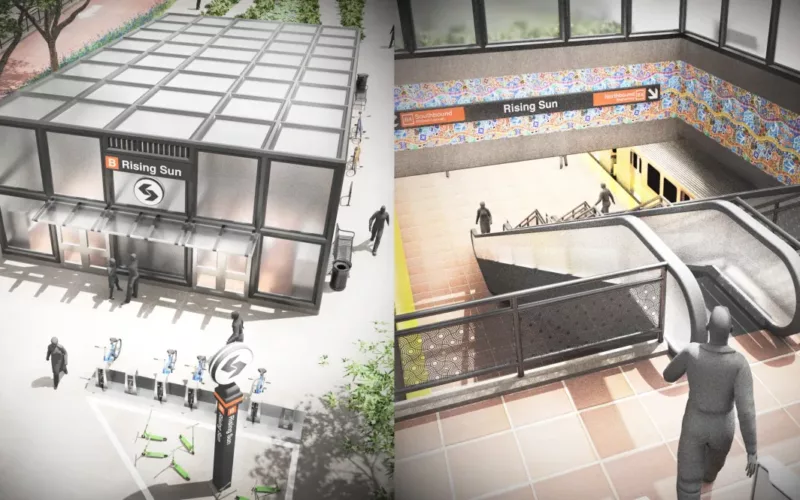

Source: Uber
Since Uber made headlines with its commitment to release some of its data, it now has some early analysis of how its service in the Los Angeles region interacts with the region’s transit system. The LA Times reports that Uber’s on-demand car service complements transit based on a month of data.
When Uber says that it is complementing transit, it says that this means that the service covers neighborhoods where public transportation services is not available and it is used to bring people to transit stations. Does Uber really do this?
It’s hard to tell from this sparse map, especially since it’s not clear whether this is limited to the City of Los Angeles or includes Los Angeles County. But from what we can gather, Uber appears to have focused on geographic adjacency, i.e. where people picked up an Uber or got out of an Uber during commute hours, to determine whether its users took transit. Uber conducted its research without data from LA Metro, which means that there is no ridership data to correlate. And there’s still some work to be done on what it means to complement transit. Cannibalizing transit trips should not be considered complementary. Regardless, here’s our take on the published findings:
The blog post reports that 22 percent of the trips were made by Uber during the six-hour window on Mondays through Fridays (7 to 10 AM and 4 to 7 PM). These peak hours are 18 percent of the week, so unlike the majority of transit riders who ride during peak hours of the day, Uber users aren’t overwhelming the service during this time of day. If it complemented transit, there might be a larger spike of trips taken by Uber during non-peak hours – it’s unclear if it does.
Perhaps by “closing the gaps,” Uber means that its service shortcuts many of the longer transit commutes, like Downtown to Hollywood or USC to Pasadena. This is useful if you’re in a rush, but there are mixed benefits when riders replace a part of the transit trip with a car trip.
Noticeably lacking in this snapshot is a single trip origin or destination in South LA, Compton, or Inglewood, where over one million people live and where the Blue and Green Lines run. This is because its study seems to only show start and end trips in the City of LA while the LA Metro rail system covers the entire county. If Uber wants to make a fair argument that Uber complements transit, then why not release trip data for all stations in the system?
What the published map does do is make the case for extensions of the planned Expo and Purple lines, Downtown connector, and eventually the Crenshaw line north to the planned Purple and Red lines in Measure R2. This supports one of the primary assertions that Uber made about how its data would help cities understand transit gaps.

Source: MoveLA
This kind of analysis is just the tip of the iceberg, and we look forward to learning more from Uber and other ridesourcing companies. Uber has announced a special partnership to release more of its data with the City of Boston, and we strongly support similar partnerships to follow suit, allowing city managers to gain a fuller picture of how Uber fits into the urban transportation system and consumer choices. It’s still unclear how car services like Uber can complement transit – what would be the best metrics for such a comparison, especially if it’s disconnected from transit data? – so the jury is still out. A pairing of real traffic and ridership data with Uber origin-destination data will allow everyone to see the full picture.
*Thanks to Shared Use Mobility Center and MoveLA for helping us understand the context of this bit of news.
 On the Brink: Will WMATA’s Progress Be Erased by 2024?
On the Brink: Will WMATA’s Progress Be Erased by 2024?
The experience of being a WMATA rider has substantially improved over the last 18 months, thanks to changes the agency has made like adding off-peak service and simplifying fares. Things are about to get even better with the launch of all-door boarding later this fall, overnight bus service on some lines starting in December, and an ambitious plan to redesign the Metrobus network. But all of this could go away by July 1, 2024.
Read More To Achieve Justice and Climate Outcomes, Fund These Transit Capital Projects
To Achieve Justice and Climate Outcomes, Fund These Transit Capital Projects
Transit advocates, organizers, and riders are calling on local and state agencies along with the USDOT to advance projects designed to improve the mobility of Black and Brown individuals at a time when there is unprecedented funding and an equitable framework to transform transportation infrastructure, support the climate, and right historic injustices.
Read More